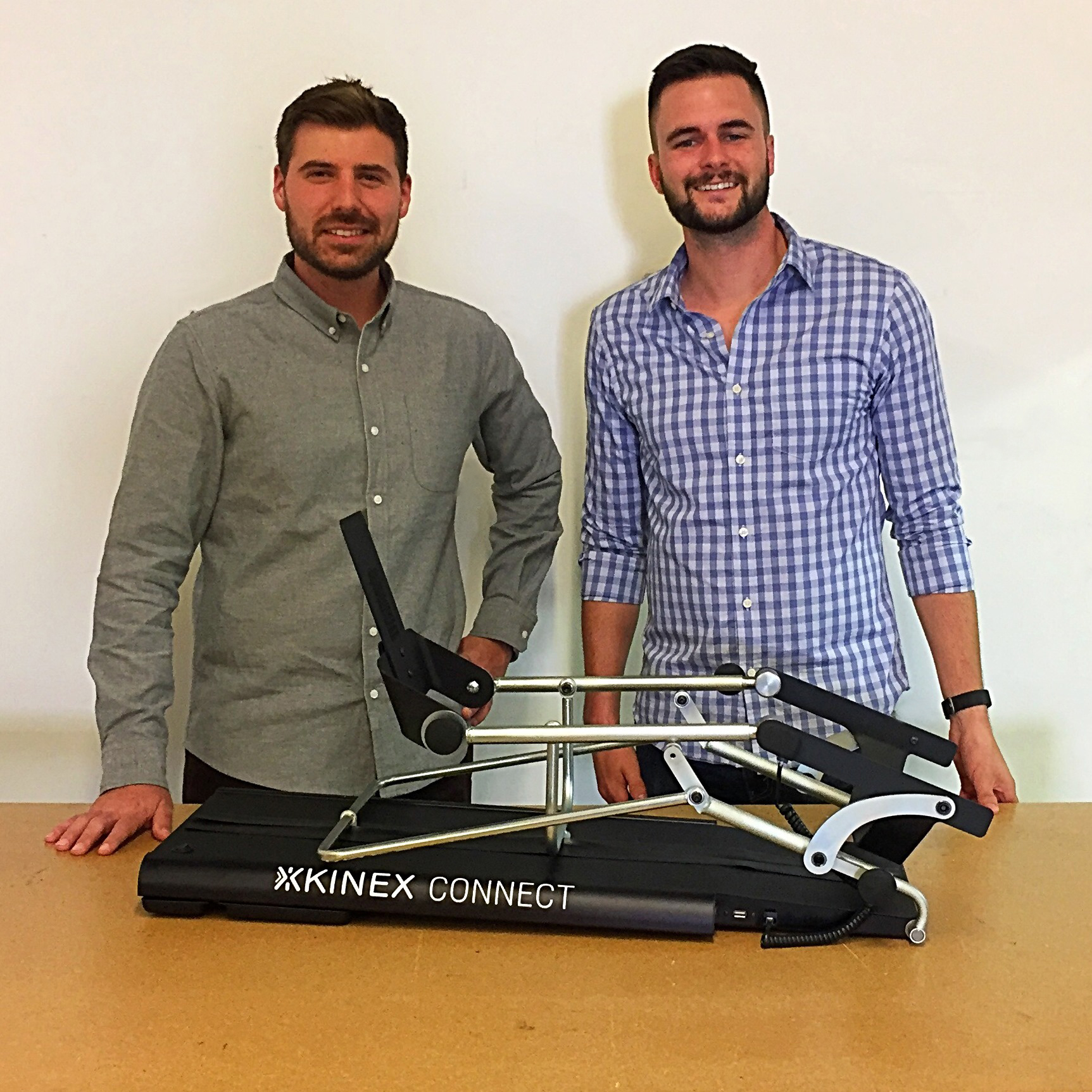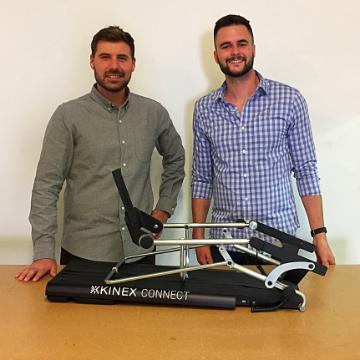
The Method for Success

Joseph Burke ’12 and Greg Method ’12 with the redesigned Continuous Passive Motion device. Photo courtesy of Greg Method
Whether it's a case of nominal determinism (the theory that one's name can affect career choice) or just a delightful example of a patronym—the matching of one's name to an occupation—that matches name to occupation or situation, Greg Method '12 landed on a method for success.
With a keen curiosity and entrepreneurial spirit, Method seized on an opportunity during his summer internship at a physical therapy clinic following his first year as a mechanical engineering student. "I began noticing problems that weren't being addressed—there's not a lot of innovation in that field—so I teamed up with a therapist to design devices and tools for use in the clinic and started my company, Method Therapeutic Solutions, to create something to help people recover from surgery," he said. "Over time, I shifted to designing therapy aids for patients to perform in-home exercises on their own, with a focus on regaining motion and returning to a normal lifestyle."
Method knew he was onto something. "I realized I had a unique product that fills an unmet need, so I stuck with it, working on the device on the side during my years at SCU." Following graduation, he teamed up with friend and classmate Joe Burke '12, mechanical engineering major, computer science and engineering minor. "We had a lot of the same classes and we knew we wanted to pursue something together. We ultimately set out to improve on an existing antiquated product and completely redesigned the Continuous Passive Motion (CPM) device for use in post-surgical knee rehab. Joe is the go-to guy for everything software-related, and his involvement spurred things on; that’s when it really got serious." Still, they had to pay the bills, and Joe worked full time at Clinkle as an android engineer "building the future of mobile banking," while Greg took a position at InCube Labs, an incubator for medical device manufacturing. "It was the next stage in the learning process of how to start and grow a company, and I gained valuable insight there on how to do that effectively," he said.
They spent that year fundraising and secured a Series A funding round. "Then it was off to the races," Method continued. He left his job in San Jose and moved back to his hometown of Salt Lake City to set up a manufacturing facility and to start production. Joe moved out some months later. "With the help of family, we began networking with a couple of influential surgeons in Utah who helped us make good connections." One of those connections was with orthopedic surgeon and five-time Olympic speed skating gold medalist Eric Heiden. Soon, they established a relationship with a customer, Kinex Connect, and within two years were acquired by them. "We were really fortunate to network with a group of incredibly supportive surgeons who believed in our concept and wanted us to succeed," Method said.
Encouragement from Santa Clara professors played a role in Method’s success as well, and he credits his senior design project advisor, mechanical engineering Associate Professor Christopher Kitts, and physics Associate Professor Philip Kesten with helping to instill an entrepreneurial mindset. "Dr. Kitts pushed us to think about commercial viability and assess industry need in creating a product that can be successful in a commercial environment, and Dr. Kesten helped cultivate the desire to keep moving forward, even when I didn't have anything other than an idea. Offering advice or just acting as a sounding board, he was a tremendous help in getting started. Those relationships are crucial. Mentorships, the support systems you find through Santa Clara—when someone believes you can do it, it helps you believe, too.
"Starting a company is not without its challenges," he continued, "and Joe and I feel fortunate now to be a part of a larger company that is moving our product forward. Still, when you've proved you can do it once, doing it again seems a lot more feasible. We do have the desire to start another company, but the problem has to be there before we pursue it.” His advice for other entrepreneurs: "If the opportunity and resources are there—especially as they are at Santa Clara and in Silicon Valley where the culture is primed for entrepreneurship—and if it's something you're interested in doing, you should go for it. It's worth it because for every success, there's a failure, and you learn equally from both."